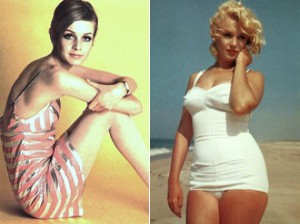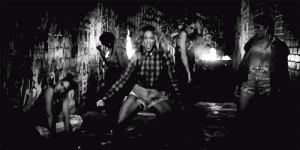Steven Levenkron, author of The Best Little Girl in the World once wrote, “From the newsstands a dozen models smiled up at her from a dozen magazine covers, smiled in thin-faced, high-cheekboned agreement to Kessa’s new discovery. They knew the secret too. They knew thin was good, thin was strong; thin was safe.” With phrases like “Fat is the new ugly on the playground,” and statistics like…the words from Levenkron’s fictional novel become more and more realistic.
Introduction to Eating Disorders
- “Fat is the new ugly on the playground.”
- 42% of all 1st through 3rd grade girls want to be thinner
- Rise in Anorexia Nervosa in young women, ages 15-19, since 1930
- Cases of Bulimia Nervosa, ages 10-39, tripled from 1988 to 1993
- Prevalence similar across races – Anorexia Nervosa is more common in non-Hispanic whites
- Hospitalization for children under 12 increased 119% from 1999-2006
- 13 million Americans binge eat, 10 million women suffer from Anorexia Nervosa, and 1 million men suffer from Anorexia Nervosa
History of Eating Disorders and Advent of Technology
Eating disorders may have been present in the early 12th and 13th centuries, but the advent of technology has led to an increased number of people being diagnosed. (Keep in mind that even though views and increased diagnoses have caused an increase in cases, many other factors have contributed to the prevalence of eating disorders.)
- 12th and 13th century reporting of Saint Catherine of Sienna with Anorexia Nervosa – According to Saint Catherine of Sienna, denying food was metaphorical for a spiritual denial of self.
- 16th century: Those with eating disorders were named “ascetics” and they were burned at the stake for being “witches.”
- Only SEVERAL clinical descriptions of “wasting disease” from the 17th -19th
- As recently as the early 20th century, eating disorders were considered to be endocrine disorders and they were primarily treated with pituitary hormones.
- As technology has developed, doctors now realize that eating disorders are a mental disease. Certainly, this increased the number of people diagnosed; however, I want to look at the paradigm shift starting in the 1970s and 80s when numbers of people suffering from eating disorders escalated and continues to escalate today to an even higher degree with young children.
- Bulimia Nervosa may have started in the wealthy middle aged settings where threw up so could consume more of the food they were capable of purchasing, but it is no longer a white, upper socioeconomic problem.
Western Culture: A nation obsessed with dieting and thinness
Ironically, as America obsesses about losing weight, as a nation, America is becoming more overweight with each passing year.
- The subsidies on industrialized foods make them more readily available for consumers of many socioeconomic backgrounds, contributing to the weight gain.
- As America’s weight has risen, so has the now 40 billion dollar dieting industry (i.e Weight Watchers) that uses all media outlets to persuade viewers to join and lose the weight they apparently have too much of.
- Pinterest and Exercise fads on the rise
- Zumba, Kickboxing Aerobics, Power Remix, “Do it for the skin tight dresses.” “Cowgirl Legs Circuit,” “Ultimate Butt Workout,” “Victoria’s Secret Ab Workout.”
Media
The media enforces sociocultural pressures, while romanticizing eating disorders, and glamorizing the “mental illness lifestyle” and making it appear both necessary and appealing.
- Media creates sociocultural pressures
- Importance of appearance for societal success
- Ideal body image (romanticized view of Princess Diana)
- The film, The Best Little Girl in the World, was released in 1981. It is based on the 1979 novel by Steven Levenkron. The storyline revolves around 17-year-old Casey, who dreams of being a ballet dancer. She becomes obsessed with being skinny and ultimately develops anorexia and bulimia. Casey recovers and enjoys and ice cream cone at the end of the film. (This perpetuates the stereotypes that eating disorders only affect young, pretty, rich girls.)
Media Subset: The Fashion Industry
- Statistics: The average woman in America is 5’ 4” and weighs about 140 pounds. The average model is 5’ 11” and weighs about 110 pounds.
- 1940s to 1950s: The media presented Marylyn Monroe’s curvy structure to be the ideal body type, and in that era, eating disorders were not as prevalent. The numbers drastically increased in 1970s to 80s. This could be linked to the media portrayal of “Twiggy,” the 92 pound British model with the “ideal” body type. (1967)
- Testimonial from Jessica Hudgens (Surviving ED Blog):
- “Who doesn’t remember the pictures of a fragile and wan-looking Mary Kate Olsen, draped in a pale lavender gown as she and her twin, Ashley Olsen, received their stars on the Hollywood Walk of Fame. The majority of people saw a young woman on the edge of death; clearly too thin, bones protruding. Then there are those of us who were enmeshed in our eating disorders. We saw a gorgeous young woman; someone to aspire to be like. Therein lies the dangers of the media.
- “I wonder if the manufacturers of the costume on the right thought they were being clever. The young woman wearing the faux skeleton is clearly not anorexic. She could be bulimic or a binge eater, but somehow, I don’t think so. Why is it acceptable for an illness that has a twenty-five percent death rate — mainly from complications or suicide — be portrayed in such a manner? Would it be acceptable if there was a costume portraying cancer? I can see it now, complete with a drip for chemo and a fake bald head, hair destroyed by radiation. Or how about diabetes, complete with fake insulin shots and a blood sugar meter?”
Case studies: Perfectionism and Control
Stress, anxiety and Obsessive Compulsive Disorder are all potential warning signs for eating disorders, especially in young children. As the perfectionistic culture of America continues to gain momentum, there is a positive correlation with an increased number of diagnosed eating disorders.
Miss America and dance and gymnastics with that girl, perfectionistic culture, need for control
- As the socioeconomic gap becomes more and more stratified, there are increasing pressure for children to do well. They are no longer an asset, but rather an investment, and parents expect much more.
- Sports have a negative effect as well, particularly in gymnastics and dance.
- Miss America testifies of her eating disorder that developed in ballet. Her brother also suffered from an intellectual disability, and she felt a need to seek perfection to make up for it, leading to an eating disorder.
- “The New Perfectionism, probably, is a perverse extension of a trend that goes back to the Enlightenment, with its unbridled individualism and rejection of tradition and religion as a source of value. We carry the burdens not only of living, but of deciding for ourselves how we ought to live, what sort of life counts as good.”
- “In 21st-century America this finds expression in the quest for “Abs of Steel” and the urges of the “Tiger Mom.””
Implications Conclusion
- Increase in suicide rates, particularly in adolescents
- If eating disorders are not treated quickly enough, the illness only gains momentum and becomes much more difficult to treat.
- Youth begin to die earlier due to complications, like cardiac arrest, associated with eating disorders.
- Eating disorders have highest mortality rate of any mental illness, statistically ranking above depression and bipolar disorder.
- Need to better educate




















